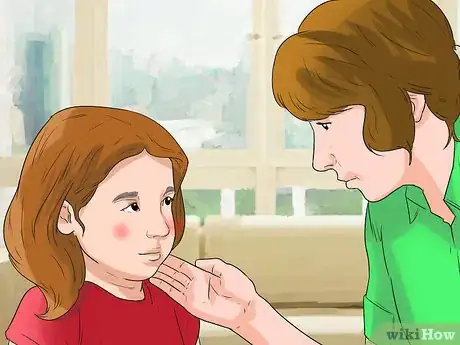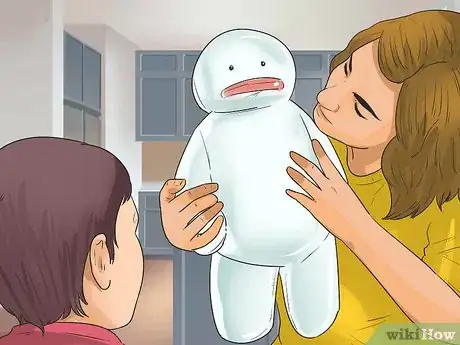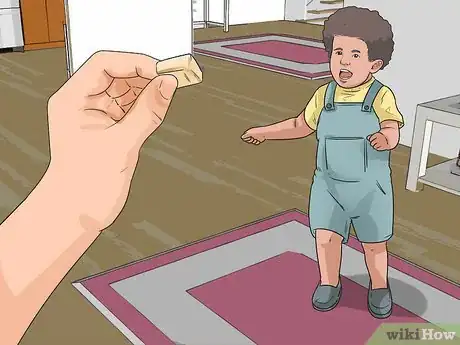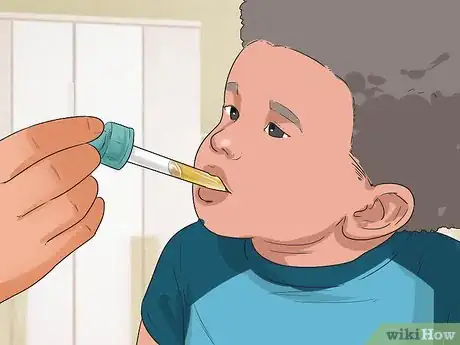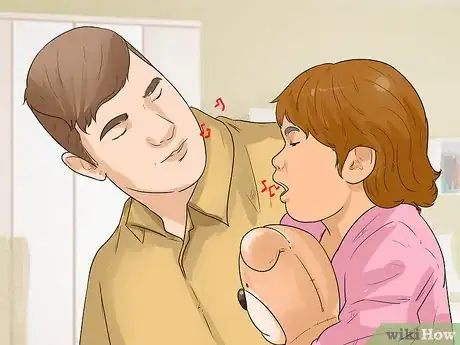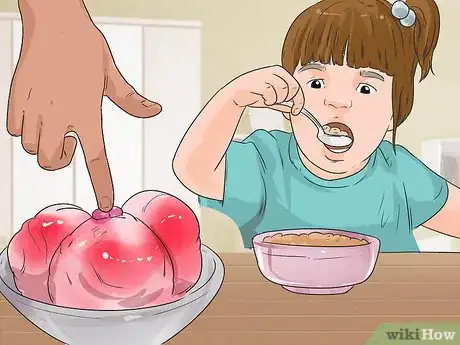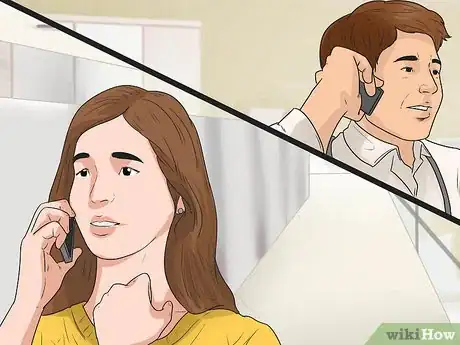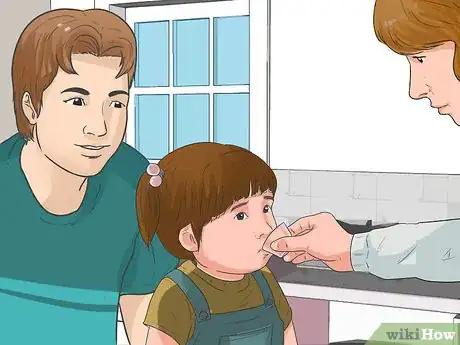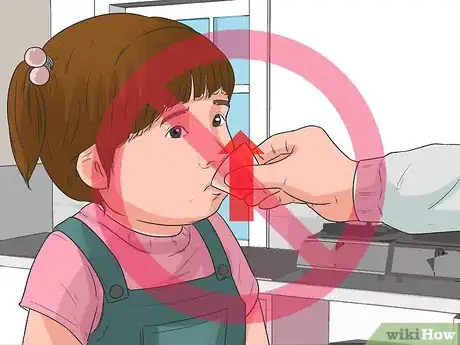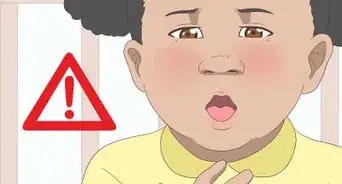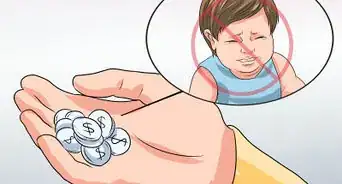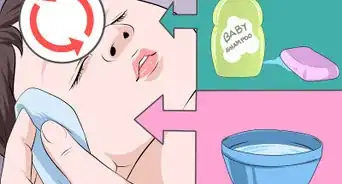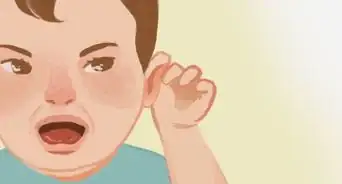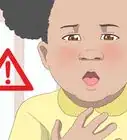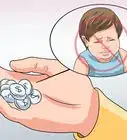This article was medically reviewed by Shari Forschen, NP, MA. Shari Forschen is a Registered Nurse at Sanford Health in North Dakota. Shari has worked in healthcare since 1996 and her expertise lies in acute care bedside nursing on a medical oncology floor. She received her degree from Medcenter one College of Nursing in 2003 and her Family Nurse Practitioner Masters from the University of North Dakota in 2014. Shari is a member of the American Nurses Association.
There are 8 references cited in this article, which can be found at the bottom of the page.
This article has been viewed 20,217 times.
Giving your toddler medication when they are sick is often the last thing you want to do. You may want to coddle and care for your toddler as much as you can. It may be even more of a challenge to give your little one medication if they actively resist it. Keeping the process fun and diverting your child’s attention can help you give your toddler the medicine necessary to get well.
Steps
Keeping Medication Time Fun
-
1Put on a cheery face. Your reactions to situations can have a big impact on how your child reacts to them. Even if you feel badly about having to give your sick tot medication, putting on a happy face and using a cheerful voice can go a long to getting your toddler to take his medication.[1]
- Prepare yourself before your approach your child. Tell yourself it will be quick and painless — for both of you. Then approach your child with a big smile and a clear statement like, "Time for medicine so you can feel better!"
- Remember to keep your facial gestures in check so you don’t cue your child into the fact that taking the meds may be unpleasant. Try and keep a smile on your face as you give your child the medication. Remember to praise your child for taking his medication.
-
2Take your child to the pharmacy with you. In some cases, you can choose the color and flavor of different medications.[2] Instead of doing this for your child, let her choose the color and flavor at the pharmacy. This may help your toddler feel like she has control over the situation. It can also make her excited to take each dose of the medication.
- Ask your doctor to prescribe a medication for your child that can have special FDA-approved color and flavor added to it.[3] These combat the bad smell and taste of many medications. Your doctor is likely well aware of the struggles of trying to get a toddler to take bad tasting medicine, so he should have some ideas.
- Take your child to the pharmacist if you are able and give her the option to choose the color and taste she wants.
- Ask your child for color and flavor selections if she is too sick to take to the pharmacist. You can call the pharmacy ahead of time to find out what colors and flavors are available. Then ask your child which is her favorite.
- Be aware that most over-the-counter meds can be flavored as well, even the most pungent cough medicine.
- Nonetheless, despite flavoring and color, your toddler may still resist or find it unpalatable.
Advertisement -
3Give your child choices. Kids like to feel as though they’re in control. Letting your child make some of the simple choices about things like where and how he takes his medication can help get your toddler to take the medication.[4]
- Tell your child to choose how he gets the medication. You can provide a variety of options such as a cup, syringe, or dropper.[5] Doing this each time can keep it fun for your toddler.
- Give your child the option to take his medication before or after getting dressed.
- Let your toddler choose where he takes his medication. Give him a couple of options such as at the kitchen table or on the sofa while watching TV.
- Make sure he knows that not taking the medication is not an option.
-
4Play doctor with your toddler. Let your child pretend to give you or a stuffed animal medicine before she takes hers. This can make your toddler comfortable enough to take her own medicine.[6]
- Comment on how well your child gives you or the stuffed animal the medication as well as how well either of you take it. Follow this up with, “Let’s see if you can take your medication as well as I did, Maya.”
-
5Offer your toddler a treat. When it comes to giving a toddler who doesn’t want to take medication he doesn’t want to take, adding an incentive can help motivate him to take the medication. Give your child a small but special treat if he takes his medication with no problem.
- Give your child a small sticker or little trinket. Consider giving gold star stickers he can put on a board of medication times. If he has a gold star for taking all of his medication, you can offer a treat like a trip to get ice cream when he feels better.[7]
- Consider offering a small treat to follow the medicine with something that tastes good, like a sip of juice or popsicle for taking the medication. Make sure to ask your doctor or pharmacist if this is okay, as some medications cannot be taken with food.[8]
Diverting Your Child’s Attention
-
1Bypass your toddler’s taste buds. In some cases, you may not be able to get different colors or flavors to hide the appearance or smell of the medication. If this is the case, you can aim medication away from your child’s taste buds so that the medication goes down easier.[9]
- Recognize that the taste buds are concentrated on the front and center of the tongue. Place the medication towards the back of your toddler’s tongue, but not so far back that she chokes. You can also drop the medication between your child’s rear gum and the inside of the cheek, which can help the medication glide down the back of throat. This can minimize the bad taste of the medication.[10]
- Consider giving your toddler an ice chip on which to suck before she takes the medication. It can help numb the taste buds so the medication goes down more smoothly. Remember to not give larger pieces of ice or entire ice cubes, which are a choking hazard.[11]
-
2Watch TV or do another fun activity. Having a fun diversion such as playing with stuffed toys, singing a favorite song, saying a rhyme, or watching TV can also help medicine go down more quickly and smoothly. This can help ease your toddler’s feelings discomfort and being out of control.[12]
- Be honest with your child that he has to take medication and you know it doesn't taste good. Suggest doing something your child likes while you give the medication. Allow your toddler to choose what that is. Having something the child likes to do combined with giving him choice may be the optimal combination to get the medicine down.
- Preface with something like the following example: “Hi Alla! It’s time to take your meds and I know you think it’s icky. Should we sing a song or watch your favorite DVD while you take it?”
-
3Hide the medicine in food. You can avoid any conversation about medication altogether by sneakily putting your child’s medication in a food; however, you need to check with your child’s doctor or pharmacist before doing this because some meds cannot be taken during meals or with particular foods.[13]
- Mix the medication with a small amount of something tasty like chocolate syrup, pudding, applesauce, yogurt or ice cream. You can also put a small amount of the medication on a spoon with any of these and give your child a spoonful until the entire dose is gone.
- Avoid putting the medication in large quantities of food so that your child doesn't need to eat much to get the full dose. A sick child won't have much of an appetite and may not want to eat an entire cup of applesauce or pudding.
- Alternate between a small dose of medicine and something your child likes to eat or drink, such as a blueberry or sip of juice.
- Grind down any tablets completely and sprinkle them in your child’s food so that she doesn’t choke.
-
4Put medication into a beverage. In many cases, you can also add your child’s medication to a drink he likes. As with food, check with the pediatrician or pharmacist to make sure that the medication can be mixed with a beverage.[14]
- Make sure to fully grind down any pills to prevent choking. Avoid mixing the medication with a full bottle or large cup of liquid to ensure your child gets the full dose before he doesn’t want any more.
- Try giving your child a spoonful of medication followed by a sip of a favorite juice or drink.
Dealing with Potential Problems
-
1Talk to your toddler. A child who is three years of age or older can usually understand if you explain why she needs to take medication. If your child is still having a hard time taking her medication, be honest and explain in terms that she can understand. It’s important to be honest with your child and not lie to make things better. You may find that appealing to your toddler’s sense of reasoning can help her take the medication.[15]
- Tell your child you know the medicine tastes bad and that the bad taste will go away quickly if she takes it quickly and in a way you suggested.
- Explain why medication will help your toddler. Asking your toddler why the medication is necessary can help start a simple conversation that may help her take the meds.
- Remember to reassure your child and be honest. Say, “I know this medication tastes bad, but taking it will make you feel better.” You may want to bolster this statement by adding something tempting like, “You’ll be able to go back to the playground soon if you take your medication.”
-
2Find a different delivery method. If your child is having difficulty taking one form of medication, see if others are available. Many companies offer their medications in liquid, capsule, and chewable options to appeal to a variety of patients. Get in contact with your doctor to see if he can prescribe a different delivery method for your child’s medication.[16]
- Consider asking your doctor if you can get the medication in a higher concentration, which may mean a smaller dose.[17]
- Make sure to let your child know if you change the delivery method. For example, you can say, “No more yucky pills. I got you a medicine you can drink that is purple and tastes like strawberries!”
-
3Use two adults to give the toddler medication. If your child is being especially uncooperative, enlist the help of a friend or loved one. This may not be pleasant for any of you, but it can help get the process over quickly. You should only use this method if your child is taking liquid medication to prevent choking.[18]
- Have one adult hold the child sitting on her lap. This adult can use her hands to keep the toddler's hands and head from moving. With one hand, open your child’s mouth by pushing on his chin or running your fingers inside his cheek and pushing down on his lower jaw. With the other hand, insert a pre-filled syringe between your child’s teeth and drip it onto the back of the tongue. Keep your child’s mouth closed until he swallows.
- Tell your child following the dose, “I’m very sorry we had to give you medicine this way. If you help out next time, we won’t have to hold you.” You may want to give your child a hug or some other type of positive reinforcement in addition to this.
-
4Stay away from double-dosing. In some cases, your child may spit out or vomit her medication. If this happens, contact your health care provider and explain what happened. He can let you know the best way to proceed for you and your child.[19]
- Avoid repeating a dose unless you’ve spoken to your doctor. Some medications can be given again without a problem, but even a little bit of others may be harmful.
-
5Talk to your health care provider. If all else fails, speak to your child’s doctor. She may have alternative suggestions about how to give your child the medication. The doctor may also prescribe something new that looks or tastes better or comes in a different form.[20]
- Avoid forcing your child to take capsules or chewable tabs. While you can force a child to take liquid medication, capsules and chewable tabs are another story. There is a very real danger of choking and aspirating the drug into the lungs, which is a serious medical emergency.[21]
- Consult with your health professional for ideas on how to give your child medicine without forcing him, which is a better idea than forcing medication on a resistant child.
References
- ↑ http://www.whattoexpect.com/toddler-health/get-toddler-to-take-medicine.aspx
- ↑ http://www.medscape.com/viewarticle/765343
- ↑ http://www.medscape.com/viewarticle/765343
- ↑ http://www.chla.org/blog/rn-remedies/nine-stress-free-tips-giving-your-child-medicine
- ↑ https://www.seattlechildrens.org/conditions/a-z/medicine-refusal-to-take/
- ↑ http://www.parents.com/toddlers-preschoolers/health/sick-toddler/cleverly-help-medicine-go-down/
- ↑ http://www.chla.org/blog/rn-remedies/nine-stress-free-tips-giving-your-child-medicine
- ↑ http://www.chla.org/blog/rn-remedies/nine-stress-free-tips-giving-your-child-medicine
- ↑ http://www.whattoexpect.com/toddler-health/get-toddler-to-take-medicine.aspx
- ↑ http://www.chla.org/blog/rn-remedies/nine-stress-free-tips-giving-your-child-medicine
- ↑ http://www.medscape.com/viewarticle/765343
- ↑ http://www.chla.org/blog/rn-remedies/nine-stress-free-tips-giving-your-child-medicine
- ↑ http://www.chla.org/blog/rn-remedies/nine-stress-free-tips-giving-your-child-medicine
- ↑ http://www.chla.org/blog/rn-remedies/nine-stress-free-tips-giving-your-child-medicine
- ↑ http://www.parents.com/toddlers-preschoolers/health/sick-toddler/cleverly-help-medicine-go-down/
- ↑ http://www.chla.org/blog/rn-remedies/nine-stress-free-tips-giving-your-child-medicine
- ↑ http://www.parents.com/toddlers-preschoolers/health/sick-toddler/cleverly-help-medicine-go-down/
- ↑ https://www.seattlechildrens.org/conditions/a-z/medicine-refusal-to-take/
- ↑ http://www.chla.org/blog/rn-remedies/nine-stress-free-tips-giving-your-child-medicine
- ↑ https://www.seattlechildrens.org/conditions/a-z/medicine-refusal-to-take/
- ↑ https://www.seattlechildrens.org/conditions/a-z/medicine-refusal-to-take/
